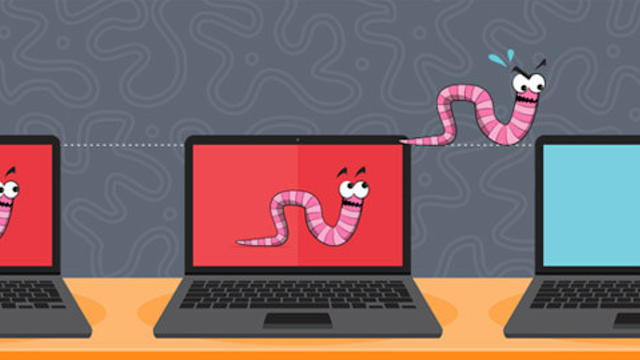- Get link
- X
- Other Apps
- Get link
- X
- Other Apps
You have already heard a lot about computer viruses. It is something that not even the general information is spared: From time to time a news item always appears in the media that a rare, powerful virus that is very difficult to detect and eliminate by common security programs is causing havoc.
At the moment they are still one of the most common forms of malware, and some of its best known "children" are Trojans and computer worms, although whenever we talk about malware - whatever its type - it tends to be generated by talking about " computer virus".
However, although all malware is a virus by definition, it is not convenient to generalize. A worm, a keylogger, or a rootkit does not pose the same threat level as a hoax or a joke, and for this reason, we are going to try to define a little better what a computer virus is as precisely as possible.
Definition of Virus
A computer virus is a malware that aims to alter the normal functioning of the computer, without the user's permission or knowledge. Viruses usually replace executable files with other files infected with their code. Viruses can destroy data stored on a computer, although there are also other more harmless ones, which are only characterized by being annoying.
Like their biological counterparts, viruses seek only one way to spread to reach as many machines as possible and cause the more infections the better.
Its operation is very simple: A program is executed that is infected, in most cases, due to the user's ignorance. The virus code remains resident (lodged) in the RAM memory of the computer, even when the program that contained it has finished executing.
The virus takes control of the basic services of the operating system, subsequently infecting executable files that are called for execution. Finally, the virus code is added to the infected program and recorded on the disk, with which the replication process is completed.
Virus Types
As we discussed earlier, viruses are typified in such a way that classification can be made based on how they infect each computer, how they spread, and for what purpose they do so. Our colleague Txaber already gave you a definition of what a computer worm is like and we left the link above, but we will still give a brief definition of the best-known ones.
The main viruses are classified as :
Trojan: It consists of stealing information or altering the hardware system or in an extreme case allows an external user to control the equipment.
Worm: It has the property of duplicating itself. Worms use the automatic parts of an operating system that are generally invisible to the user.
Logic or time bombs: These are programs that are activated when a certain event occurs. The condition is usually a date - in which case they are known as "Time Bombs" -, a combination of keys, or certain technical conditions - what is known as "Logic Bombs". If the condition does not occur, it remains hidden from the user.
These three types have their own subtypes, but generally, they are the main and most damaging.
Viruses and Operating Systems
Currently, there is practically no operating system that is free from computer virus infections. Virtually any machine can be infected regardless of the operating system you use, although it is difficult to find a virus that is agnostic to the operating system.
Most infections usually occur in Windows, on the one hand, due to its immense popularity and extension, on the other hand, due to the security flaws that the system has - and that Microsoft increasingly tries to correct with more effort -, and for Finally, the lack of knowledge of many users of the operating system, which facilitates infections through deception.
Unix-based systems such as Linux and OS X are much more in the minority in this regard, although as we were able to read recently on the Internet, OS X is no longer so secure. As I said, these operating systems are less prone to infections due to their file system and the need to escalate privileges to perform administrative tasks, and users of operating systems such as Linux or FreeBSD usually have greater security knowledge.
Propagation Methods and Countermeasures
There are basically two great forms of contagion. In a media always the participation of the user, who is the one who installs the malicious program, or accepts a series of conditions so that it is downloaded to their computer and then installed.
The second form of contagion is that of computer worms, where the virus multiplies and spreads through computer networks.
As for the countermeasures to combat and avoid infections, there is one that should prevail above all called "common sense". The Internet is full of pages to read and valuable information on what we should and should not do with our computers, so it is worth being informed.
Apart from this, there are few more common users who can do apart from installing an antimalware and antivirus program, which will be the second line of defense if the user's common sense fails.
And so far our guide to know more precisely what a virus is and better understand how they spread, how they act, and how to fight them. We hope you have found it useful.
- Get link
- X
- Other Apps

Comments
Post a Comment